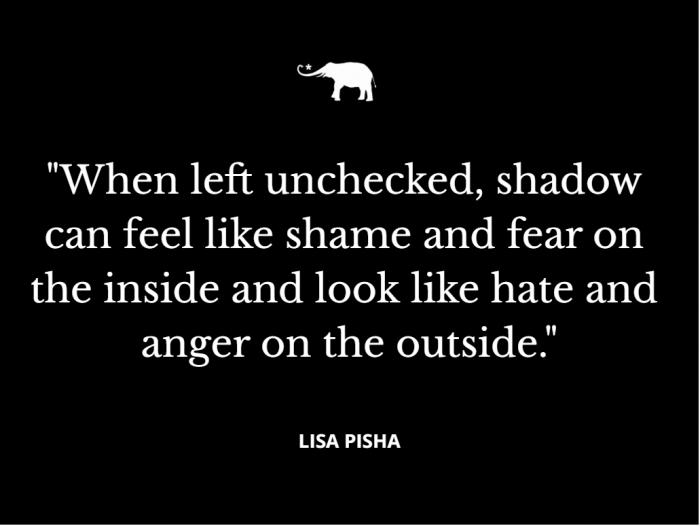~
Shadow work, the subconscious, the unconscious, lifting the veil.
These are all terms used to describe what lies beneath the surface of our outer self, our representative, the parts we show to the world.
The concept of shadow, conceptualized by Carl Jung, was something to be discovered behind closed doors, in the privacy of a therapy room. However, the work of the shadow has gained popular attention, especially as of late, as so many of us strive to seek a more conscious and connected self as opposed to just one version.
We’re ready for authenticity, transparency, and want deeper, more connected relationships, and shadow work is one of the ways to get there. But how do we tap into it and why do we want to?
When left unchecked, shadow can feel like shame and fear on the inside and look like hate and anger on the outside. Instead of getting curious and allowing for wonder and expanse, we judge and constrict, only allowing for one idea or ideal. The danger in this is that it breeds smallness, lower level thought processes that continuously feed through more unchecked shadow and constriction.
This creates a divide—even among friends and people of common interests—because the less aware you are of your shadows and the role they play in your life, the less able you are to show up as your full, transparent self in the world. Not being curious about where your thoughts, feelings, and behaviors come from also lends itself to not being curious about others’ as well. And relationships—deep, connected, meaningful relationships—aren’t created in one-dimensional silos. They’re created by a process of discovery.
The process of self-discovery and shadow work requires curiosity. Uncovering the shadow, lifting the veil over what lies beneath, is an exploration of curiosity that starts with a focus on a feeling. Being able to identify what you feel in its active state allows for a crack in the doorway to begin to open and allow this curiosity to further widen the entry.
Questions and tips to access your shadow
What is this feeling in your body? Can you describe it? Can you give it a color, a weight? Does it remind you of anything else?
These questions deepen the curiosity and allow for openings in the doorway. Can you hold that feeling and write about it or describe it to someone, placing it outside your body as a three-dimensional object? Can you hold the feeling as though it’s not a part of you?
Spending time in the space and getting curious about what you see, feel, and the thoughts around it is the first step in the process of shadow work. However, shadow work in a relationship is a two-part process, pretty much most of the time.
The first part is your own self-discovery, your own curiosity and observation. The second part is bringing your partner with you on that journey. This looks like sharing what you’ve observed about yourself, what the process of this work has been like for you, and getting curious about where you’re headed with the work you’re doing.
As though you’re telling your partner a story, share with him or her more than just the outline of the work you’re doing but what you’ve discovered. The vulnerability and the connection is in the details of this work, regardless of what your partner thinks.
If we’re truly seeking the deep, connected relationships we say we want, then doing the work of being willing to stand alone is exactly how we get there.
~
 Share on bsky
Share on bsky


Read 1 comment and reply